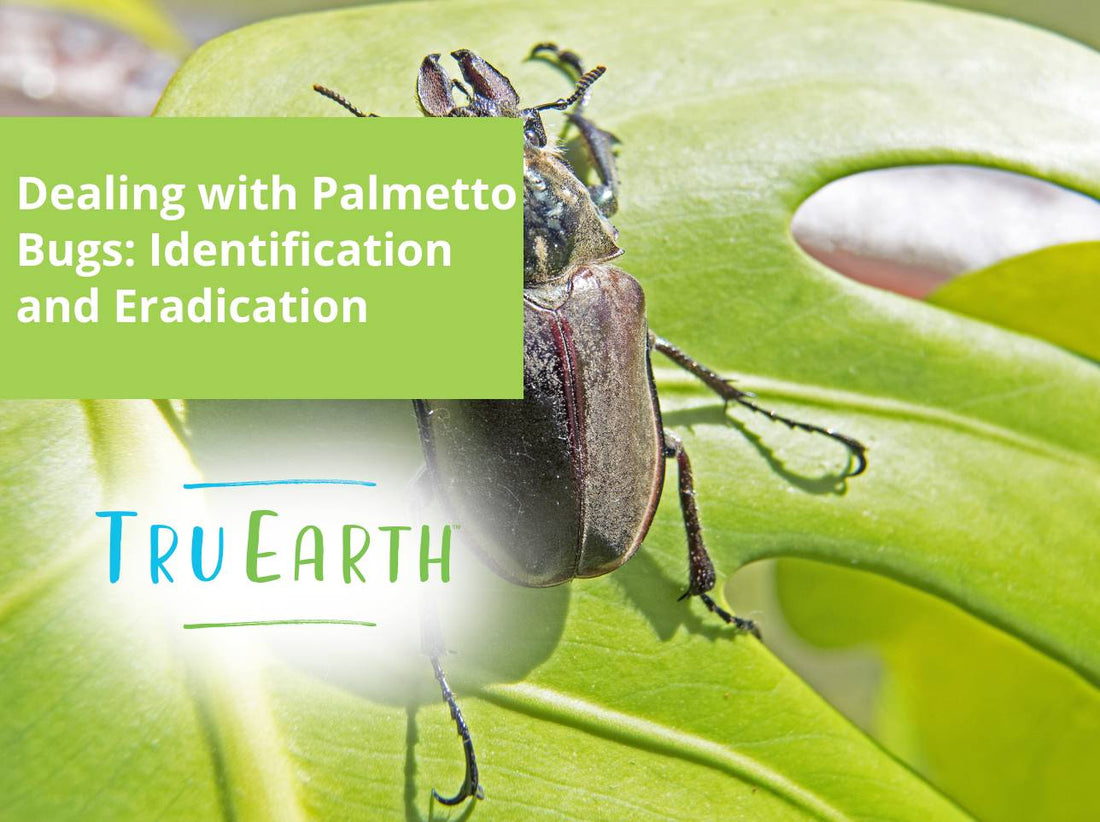Palmetto bugs, the unwelcome guests of many homes and businesses, are an unsightly and distressing sight for most people. Also known as the American cockroach, these large, reddish-brown insects are often perceived as pests due to their presence indoors. In this article, we'll dive into the world of palmetto bugs, exploring what they are and providing effective strategies for getting rid of them.

Palmetto Bugs: What Are They?
Palmetto bugs, scientifically known as Periplaneta americana, are a common species of cockroach found in the southern areas. They are large, measuring about 1.5 inches to 2 inches long, and have a distinctive appearance.
Palmetto bugs are reddish-brown with well-developed wings, even though they don't typically fly. While primarily outdoor insects, they often find their way into homes and other buildings.
The Challenges of Palmetto Bug Infestations
Palmetto bugs can be a formidable foe when they infest your living spaces. Here are some challenges you might face:
- Health Risks: Palmetto bugs are known carriers of pathogens that can cause disease. They can contaminate food and surfaces with bacteria that pose health risks to humans.
- Allergens: The shed skins and waste products of palmetto bugs contain allergens that can trigger allergic reactions in some individuals.
- Unwanted Guests: Their presence can be distressing, as these large insects are not easy to ignore.
- Reproduction Rate: Palmetto bugs reproduce rapidly, making infestations difficult to control.
Effective Ways to Get Rid of Palmetto Bugs
Dealing with palmetto bugs can be challenging, but there are several methods you can employ to eliminate or control their presence:
- Keep Your Home Clean: A clean environment is less inviting to palmetto bugs. Ensure your home is free of crumbs, grease, and food residues.
- Seal Entry Points: Check for cracks and crevices where palmetto bugs can enter your home and seal them.
- Use Boric Acid: Boric acid is a natural and effective way to kill palmetto bugs. It sticks to their bodies and is ingested during grooming, leading to their demise.
- Gel Baits and Insecticides: Gel baits are attractive to palmetto bugs and contain insecticides. These baits can help eliminate infestations.
- Professional Pest Control: For severe infestations or persistent problems, consider hiring a professional pest control service.

Preventing Future Infestations
Taking proactive measures to keep palmetto bugs from returning to your living spaces is vital. These insects can be persistent, so a strong prevention strategy is your best defense. Here's an expanded look at each preventive step:
- Regular Inspections: Regular inspections of your home are essential. Palmetto bugs can leave telltale signs of their presence, such as droppings or egg casings. Pay special attention to areas like kitchens, bathrooms, and basements where these pests are more likely to congregate. By catching signs early, you can address any emerging infestations swiftly, preventing them from getting out of hand.
- Remove Outdoor Attractants: Palmetto bugs often find their way into homes from the outdoors. Woodpiles, decaying vegetation, and other organic matter provide ideal hiding spots and food sources for these pests. Keeping your outdoor areas clean and well-maintained is crucial. Remove wood piles or debris, and keep yards and gardens tidy. By minimizing outdoor attractants, you'll make your home less appealing to these unwanted visitors.
- Store Food Properly: Palmetto bugs are opportunistic feeders. They'll happily munch on food scraps or crumbs in your home. To prevent these pests from contaminating your food, store it properly. Use airtight containers to seal away your food, especially items like grains, cereals, and pet food. By denying palmetto bugs access to food sources, you reduce their motivation to linger in your living spaces.
- Control Moisture: Palmetto bugs are strongly attracted to damp environments. They thrive in areas with high humidity, so they're often found in bathrooms and kitchens. Address moisture issues promptly. Fix any leaks, be it from plumbing or the roof, and ensure good ventilation to keep humidity levels in check. Dehumidifiers can be especially effective in basements and other areas where controlling moisture is challenging.
- Seal Outdoor Openings: The journey of a palmetto bug into your home often begins outdoors. To prevent their entry, inspect your home's exterior for openings and vents that these pests could use. Make sure all these openings are properly sealed to keep palmetto bugs from gaining access. You might need to caulk gaps, fix damaged screens, and ensure doors and windows have tight-fitting seals. When outdoor access is limited, you significantly reduce the chances of palmetto bugs returning.
By diligently following these preventive steps, you'll create an unattractive environment to palmetto bugs, making your home a less appealing place for these pests to inhabit. Your commitment to proactive prevention is the key to keeping these unsightly insects at bay.

Eliminating the Palmetto Bug
Palmetto bugs, though intimidating, can be managed with the right strategies. Understanding what they are and their behavior is the first step. By adopting proper hygiene and prevention measures, along with appropriate treatments when needed, you can significantly reduce their presence in your living spaces. The combination of these methods should help you maintain a palmetto bug-free environment.


